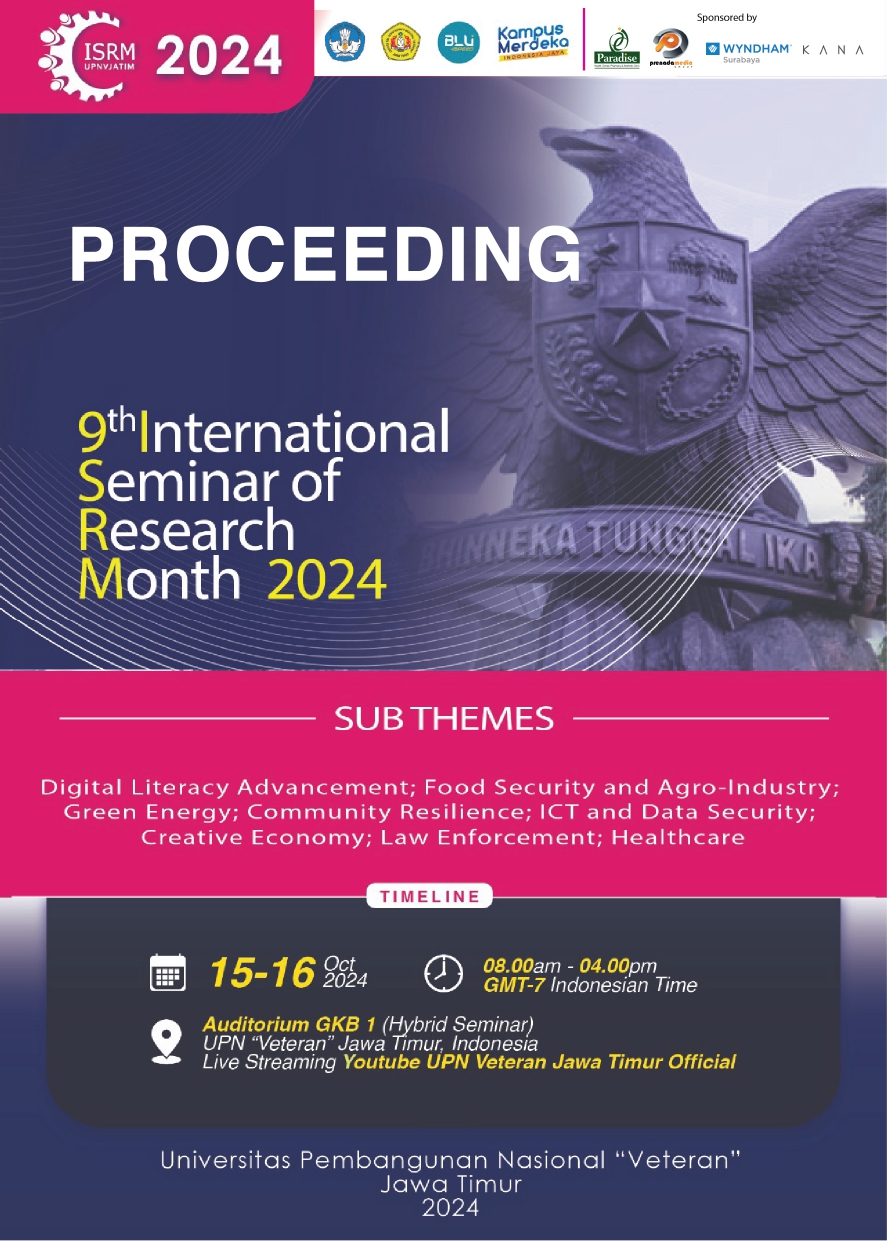Chili Plant Growth Promoted by Bio-Encapsulated Bacillus sp. Biological Control Agents in Different Coating Materials
DOI:
https://doi.org/10.11594/nstp.2025.4759Keywords:
Bacillus sp., biological control, Fusarium wilt, bio-encapsulationAbstract
Bacillus sp. is a biological control agent widely used to enhance plant growth and control diseases, especially in suppressing Fusarium wilt pathogens. The effectiveness of Bacillus species in controlling diseases varies, with isolates Bcz20, Bcz14, and Bcz16 showing the highest inhibition. Fusarium sp. a fungal pathogen, isolated from infected chili plants, produces characteristic crescent-shaped spores. For bio-encapsulation, various coating materials such as sodium alginate, carrageenan, and chitosan were used. Sodium alginate proved to be the most compatible coating material, effectively maintaining the Bacillus population over time. The encapsulation efficiency was tested through a detailed process, which revealed Bacillus isolate Bcz20 as the most viable among the various coating materials, especially sodium alginate. In VIVO tests on chili plants showed that bio-encapsulation of Bacillus sp. did not show significant differences in height but showed better root development in the treatment using Bacillus Bcz20 with carrageenan. Bacillus sp. plays an important role in enhancing plant growth and promoting systemic resistance, making it a promising agent for sustainable agriculture.
Downloads
References
Agrios, G. N. (2005). Plant Pathology (Fifth Edit). Academic Press.
Choudhary, D. K., & Johri, B. N. (2008). Interaction of Bacillus spp. and plants-with special special reference to induced systemic resistance (ISR). Microbiol Res., 164(5), 493-513. doi:10.1016/j.micres.2008.08.007.
Elad, Y., & Freeman, S. (2002). Biological control of fungal plant pathogen. pp. 92- 109. In Kempken (Ed.), The Mycota XI, Agricultural Applications. SpringerVerlag, Berlin.
Gond, S. K., Bergena, M. S., Torresa, M. S., & White, J. F. Jr. (2015). Endophytic Bacillus spp. produce antifungal lipopeptides and induce host defence gene expression in maize. Microbiological Research, 172, 79–87.
Junaid, J. M., Dar, N. A., Bhat, T. A., Bhat, A. H., & Bhat, M. A. (2013). Commercial biocontrol agents and their mechanism of action in the management of plant pathogens. Int. J. Modern Plant & Anim. Sci. 1(2), 39-57.
Khan, N. H., Korber, D. R., Low, N. H., & Nickerson, M. T. (2013). Development of extrusion-based legume protein isolate–alginate capsules for the protection and delivery of the acid-sensitive probiotic, Bifidobacterium adolescentis. Food Research International, 54(1), 730-737.
Malfanova, N.V. (2013). Endophytic bacteria with plant growth promoting and biocontrol abilities. Leiden University Repository, 15-37.
Mugiastuti, E., Manan, A., Rahayuniati, R. F., & Soesanto, L. (2019). Aplikasi Bacillus spp. untuk mengendalikan penyakit layu fusarium pada tanaman tomat. Fakultas Pertanian, Universitas Jenderal Soedirman, Purwokerto Jl. dr. Soeparno, Karangwangkal, Purwokerto, Jawa Tengah.
Morales-Rodriguez, I., Yanez-Morales, M. J., Silva-Rojas, H. V., de los Santos, G. G., Guzman-de-Munkvold, G. P. (2003). Epidemiology of Fusarium diseases and their mycotoxins in maize ears. European Journal of Plant Pathology, 109, 705-713.
Pour, M. M., Riseh, R. S., Ranjbar-Karimi, R., Hassanisaadi, M., Rahdar, A., & Baino, F. (2022). Microencapsulation of Bacillus velezensis using alginate-gum polymers enriched with TiO2 and SiO2 Nanoparticles. Micromachines, 13(9), 1423.
Prakash, J., & Arora, N. K. (2019). Phosphate-solubilizing Bacillus sp. enhances growth, phosphorus uptake and oil yield of Mentha arvensis L. 3 Biotech., 9(4), 126. doi: 10.1007/s13205-019-1660-5.
Prihatiningsih, N., Arwiyanto, T., Hadisutrisno, B., & Widada, J. (2015). Mekanisme Antibiosis Bacillus Subtilis B315 untuk pengendalian penyakit layu bakteri kentang. Fakultas Pertanian Unsoed Purwokerto Kampus Karangwangkal. Yogyakarta.
Radhakrishnan, R., & Lee, I. (2016). Gibberellins producing Bacillus methylotrophicus KE2 supports plant growth and enhances nutritional metabolites and food values of lettuce. Plant Physiology and Biochemistry, 109, 181-189.
Saad, M. M., Abo-Koura, H. A., Bishara, M. M., & Gomaa, I. M. (2020). Microencapsulation: Toward the reduction of the salinity stress effect on wheat plants using NPK rhizobacteria. Biotechnology Journal International, 23(4), 1–18.
Suryani, N., Betha, O. S., & Mawaddana, Q. (2019). Uji viabilitas mikroenkapsulasi LactoBacillus casei menggunakan matrik natrium alginat. Jurnal Farmasi Lampung, 8(1), 1–8.
Szczech, M., & Maciorowski, R. (2016). Microencapsulation technique with organic additives for biocontrol agents. Journal of Horticultural Research, 24(1), 111–122.
Uyen, N. T. T., Hamid, Z. A. A., Tram, N. X. T., & Ahmad, N. (2020). Fabrication of alginate microspheres for drug delivery: A review. International Journal of Biological Macromolecules, 153, 1035–1046.
Wuryandari, Y, Lestari, S.R., Mahendra, R. 2022. Kemampuan antagonistik bakteri Bacillus Spp. terhadap patogen Fusarium sp. penyebab penyakit layu tanaman cabai (Capsicum Annum L.) dan mekanisme kerjanya. Laporan Akhir. Riset Pui-PT Pusat Inovasi Teknologi Tepat Guna Pangan Dataran Rendah Dan Pesisir
Zhang, S., Raza, W., Yang, X., Hu, J., Huang, Q., Xu, Y., Liu, X., Ran, W., & Shen, Q. (2008). Control of Fusarium wilt disease of cucumber plants with the application of a bioorganic fertilizer. Biol Fertil Soils, 44, 1073–1080.
Downloads
Published
Conference Proceedings Volume
Section
License

This work is licensed under a Creative Commons Attribution 4.0 International License.
Authors who publish with this proceedings agree to the following terms:
Authors retain copyright and grant the Nusantara Science and Technology Proceedings right of first publication with the work simultaneously licensed under a Creative Commons Attribution License that allows others to share the work with an acknowledgement of the work's authorship and initial publication in this proceeding.
Authors are able to enter into separate, additional contractual arrangements for the non-exclusive distribution of the proceedings published version of the work (e.g., post it to an institutional repository or publish it in a book), with an acknowledgement of its initial publication in this proceeding.
Authors are permitted and encouraged to post their work online (e.g., in institutional repositories or on their website) prior to and during the submission process, as it can lead to productive exchanges, as well as earlier and greater citation of published work (See the Effect of Open Access).










